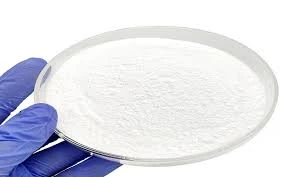Sevoflurane An Essential Inhalational Anesthetic
Sevoflurane is a widely utilized inhalational anesthetic agent that plays a pivotal role in modern anesthesia practice. With its molecular formula of C4H3F7O and an attractive profile for use in both surgical and non-surgical procedures, sevoflurane has garnered attention for its efficacy and safety. Available in a 250ml formulation, it serves as a cornerstone for anesthesiologists around the globe.
Chemical Properties and Mechanism of Action
Sevoflurane is a halogenated ether that is characterized by its low blood-gas partition coefficient, meaning it is rapidly absorbed and eliminated. This property allows for quick induction and emergence from anesthesia, making it particularly valuable for outpatient procedures where recovery time is paramount. The anesthetic effect of sevoflurane occurs through its interaction with gamma-aminobutyric acid (GABA) receptors and glycine receptors in the central nervous system, leading to a sedative effect that facilitates surgical interventions.
Applications in Clinical Practice
Sevoflurane is commonly used in a variety of surgical settings, ranging from minor outpatient procedures to complex surgeries. It is especially favored in pediatric anesthesia due to its pleasant odor and rapid onset of action. Children often tolerate sevoflurane well, making it a suitable choice for initiating anesthesia in a population that can be sensitive to other anesthetic agents.
In adult patients, sevoflurane is associated with a favorable safety profile, including minimal cardiovascular effects compared to other inhalational agents, such as halothane. Its use extends beyond operating rooms, as it is also utilized in various procedural sedations in non-operating room anesthesia (NORA) settings.
sevoflurane 250ml

Safety Profile and Considerations
Sevoflurane is generally well-tolerated, but like all anesthetics, it is not without potential risks. Some patients may experience hypotension, respiratory depression, or emergence delirium, particularly after prolonged exposure. An important consideration is its metabolism; sevoflurane is metabolized by the liver, and while it has low hepatotoxic potential, care must be taken in patients with pre-existing liver conditions.
One of the significant advantages of sevoflurane is its non irritating nature, which reduces the likelihood of bronchospasm. This quality is crucial for patients with respiratory issues, including asthma. However, anesthetic staff must monitor patients closely for any signs of hypersensitivity or complications during administration.
Environmental Impact and Future Directions
As with many inhalational anesthetics, sevoflurane's impact on the environment is a growing concern. The agent is a greenhouse gas that contributes to global warming. This has prompted ongoing research into alternative anesthetic agents and techniques that minimize environmental impact while ensuring patient safety and comfort. Reclamation methods to capture and reuse anesthesia gases during surgical procedures are also being explored to reduce the carbon footprint associated with sevoflurane use.
Conclusion
Sevoflurane, particularly in its 250ml formulation, stands out as an essential inhalational anesthetic. Its favorable pharmacological profile, ease of use, and patient tolerability mark it as a favorite among anesthesiologists. As the field of anesthesia evolves, ongoing research will undoubtedly shed light on optimizing its use while addressing environmental concerns. The continued study of sevoflurane will help ensure that it remains an integral part of anesthetic practice for years to come, enabling safe and effective management of patient anesthesia across a wide spectrum of surgical interventions.

